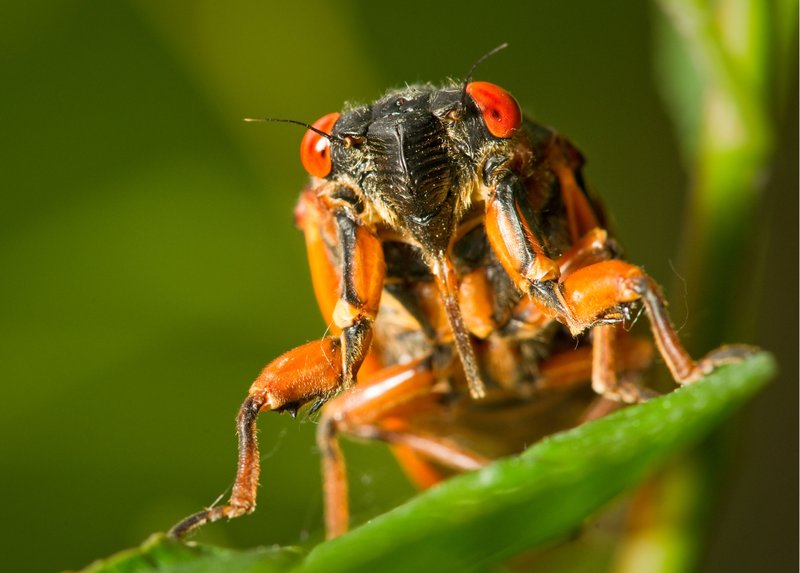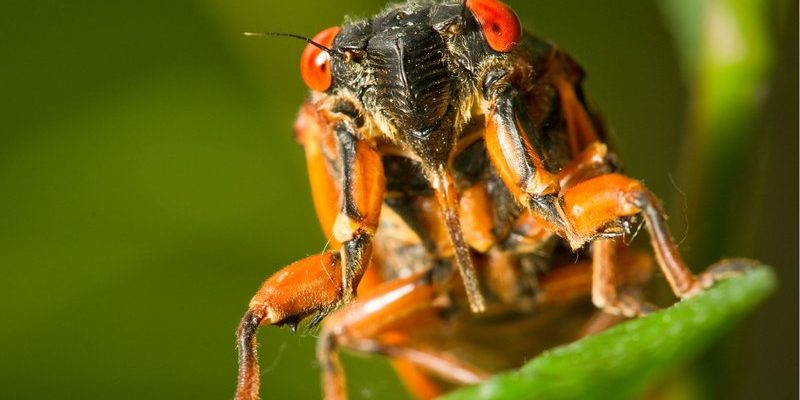
Cicadas are those fascinating insects that seem to have a talent for making their presence known, especially in summer. Their buzzing calls fill the air, sounding almost like nature’s own symphony. But there’s so much more to these little critters than just their noisy performances. Think of cicadas like the lead singers in a rock band; they have a lot going on behind the scenes that often goes unnoticed. You might be surprised by just how special these insects really are!
If you’ve ever been curious about cicadas—maybe wondering why they’re so loud, how long they live, or what their life cycle looks like—you’re in the right place. Let’s dive into the world of cicadas and explore ten intriguing facts that might surprise you. We’ll learn about their unique behaviors, surprising lifespans, and even their place in nature.
1. Cicadas Have a Long Lifespan
Believe it or not, cicadas can live a lot longer than you might think! Most cicadas spend the majority of their lives underground as nymphs. This phase can last from 2 to 17 years, depending on the species. For instance, the famous 17-year cicada, part of the Magicicada genus, waits for nearly two decades before making its grand entrance. It’s like waiting for the perfect moment to shine!
Once they finally emerge, they don’t stick around for long. Adult cicadas live for about 4 to 6 weeks. During this time, their main goal is to mate and lay eggs. So, their time above ground is a whirlwind of activity, almost like they’re cramming a lifetime of fun into just a few short weeks!
2. The Sound of Cicadas is a Mating Call
If you’ve ever heard cicadas buzzing in the trees, you might have thought it was just noise. But here’s the thing: that buzzing is actually a mating call! Male cicadas produce a sound called a call by rapidly contracting and relaxing special muscles in their abdomen. It’s an effort to attract females. Think of it as their way of serenading their potential mates!
The pitch and volume of these calls can vary widely between species. Some cicadas have even been known to be louder than a chainsaw! This vocal performance not only helps attract females but also establishes territory among male cicadas. So, when you hear that buzzing, just know it’s all about love and competition in the cicada world!
3. They Have a Unique Life Cycle
Cicadas go through a fascinating life cycle that’s quite different from many other insects. They start life as eggs that are laid in tree branches. When they hatch, the young nymphs drop to the ground and burrow underground. This is where they’ll spend most of their lives, feeding on sap from plant roots. It’s like spending years in a hidden underground club!
As nymphs grow, they’ll molt several times before finally emerging as adults. When they surface, they cling to tree trunks or other surfaces and shed their exoskeletons. This process is called ecdysis, and it’s quite a sight to see! The newly emerged adults are initially soft, but they quickly harden and develop their wings, ready to join the chorus of summer sounds.
4. Cicadas are Mostly Harmless
Many people associate cicadas with annoyance, but they’re generally harmless to humans and pets. They don’t bite or sting, and their main focus is on finding mates. You might be wondering, though, if they cause any damage. The good news is that while they do lay eggs in tree branches, most trees can tolerate this without significant harm.
However, heavy infestations can cause some stress to young trees, but mature trees typically bounce back just fine. So, next time you hear a cicada buzzing, consider them a natural part of the summer ecosystem rather than a pest!
5. Different Species, Different Cycles
Cicadas aren’t all created equal! There are more than 3,000 species of cicadas worldwide, and they can be broken down into two main groups: annual cicadas and periodical cicadas. Annual cicadas emerge every year, typically in late summer, and have a life cycle of about 2 to 5 years. On the other hand, periodical cicadas, like those infamous 17-year varieties, emerge in synchronized cycles that can be quite a spectacle.
This difference in life cycle has fascinated scientists and nature lovers alike. The synchronized emergence of periodical cicadas is a survival tactic that overwhelms predators. It’s kind of like a flash mob: when there are so many cicadas at once, it’s hard for birds and other animals to eat them all!
6. Cicadas Have Incredible Hearing
Cicadas possess an extraordinary sense of hearing that helps them navigate their world. They have specialized structures called tymbals on the sides of their abdomens that not only produce sound but also help them perceive it. These tymbals can detect the calls of other cicadas, allowing them to determine whether it’s time to join in or hold back.
This ability to communicate and listen plays a critical role in their mating rituals. Male cicadas can adjust their calls based on the ambient sound levels of their environment. So, if it’s noisy out there, they might amp up their volume to ensure their serenade is heard loud and clear!
7. Cicadas and Climate Change
Cicadas are also indicators of environmental health. Their life cycles are closely tied to temperature and weather patterns. As climates change, scientists are observing shifts in their emergence times. For example, warmer seasonal temperatures could lead to earlier hatchings, affecting their mating behaviors and survival rates.
This relationship with the environment makes cicadas a subject of study for understanding how climate change impacts ecosystems. It’s a reminder of how interconnected all living things are! By paying attention to cicadas and their habits, we can gain valuable insights into our changing world.
8. They’re Not All Noisy
While male cicadas are known for their loud calls, not all cicadas are noisy. Some species are surprisingly quiet, leading many people to overlook them completely. For example, the native cicadas of North America can be quite subtle in their sounds, making them hard to detect amidst the louder species.
This quietness isn’t just about mating calls; it also plays a role in avoiding predators. Less noticeable cicadas can slip under the radar while the louder males are busy attracting attention. Mother Nature sure knows how to keep things balanced!
9. Cultural Significance of Cicadas
Cicadas hold a significant place in various cultures around the world. In some cultures, they symbolize rebirth and transformation due to their unique life cycle. For instance, in parts of East Asia, cicadas are celebrated in art and folklore. They represent the fleeting nature of life, reminding us that moments of beauty can often be short-lived.
In addition to that, cicadas are sometimes used in traditional medicine. Their bodies have been known to be ground into a powder used for various health remedies. While this might sound unusual to some, it highlights how different cultures view these insects as more than just noisy bugs!
10. Their Role in the Ecosystem
Cicadas play a crucial role in their ecosystems. As they feed on the sap of trees, they help facilitate nutrient cycling and contribute to the health of the plants. Moreover, their emergence in large numbers provides a significant food source for various animals, including birds, mammals, and even some reptiles. This makes them an essential part of the food web.
Without cicadas, many creatures that rely on them for sustenance would struggle to find enough to eat. So, despite their noisy reputation, they have a vital role in maintaining balance in nature. It’s a beautiful example of how each creature, no matter how small, contributes to the greater good.
So, the next time you hear that familiar buzz in the air, take a moment to appreciate these incredible insects. There’s a whole world of fascinating facts about cicadas that goes beyond their noise. They’re not just summer soundtracks—they’re a vital part of our ecosystem, with stories to tell and roles to play!

